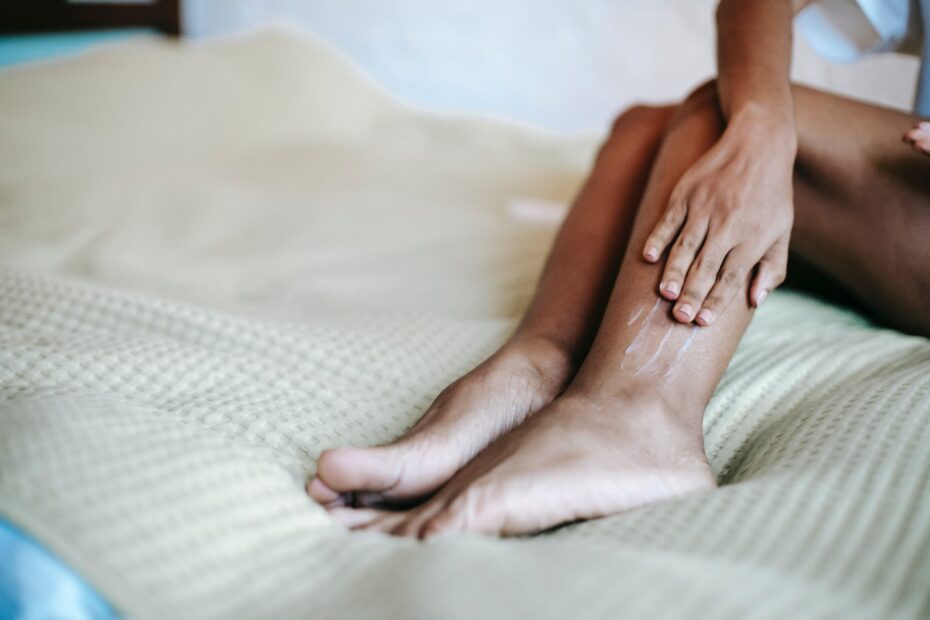Chafing can be a painful and uncomfortable problem that affects many people, especially those who engage in physical activities or have sensitive skin. But fear not, because there are dermatologist-approved solutions to keep chafing at bay! In this article, we will explore the best ways to prevent and treat chafing, with expert advice from dermatologists.
Chafing occurs when the skin rubs against itself or clothing, causing friction and irritation. It commonly affects areas such as the inner thighs, underarms, and groin. To prevent chafing, it is important to choose the right clothing that fits well and is made of breathable materials. Lubrication techniques, such as using anti-chafing balms or powders, can also help reduce friction.
If chafing does occur, there are several dermatologist-approved treatments available. These may include over-the-counter creams or ointments that soothe the skin and promote healing. In some cases, prescription medications may be necessary to treat severe or persistent chafing.
By following these expert tips and strategies, you can say goodbye to chafing and enjoy a more comfortable and pain-free experience. Remember, prevention is key, so be proactive in taking care of your skin and avoiding chafing. Consult with a dermatologist for personalized advice and recommendations.
Understanding Chafing
Understanding Chafing
Chafing is a common skin irritation that occurs when there is repeated friction between two surfaces, such as skin rubbing against skin or skin rubbing against clothing. This friction can lead to redness, inflammation, and discomfort. Chafing is often caused by activities that involve repetitive motion, such as running, walking, or cycling. It can also occur in areas where there is moisture and heat, such as the underarms, groin, and inner thighs.
There are several factors that can contribute to chafing. One of the main causes is inadequate lubrication between the skin surfaces. When the skin is dry or there is excessive moisture, the friction increases, leading to chafing. Additionally, wearing tight or ill-fitting clothing can also contribute to chafing, as it creates more friction against the skin. It is important to note that everyone’s skin is different, and some individuals may be more prone to chafing than others.
To prevent chafing, it is crucial to keep the affected areas clean and dry. Applying a lubricant, such as petroleum jelly or anti-chafing balms, can help reduce friction and provide a protective barrier. Choosing breathable and moisture-wicking fabrics for clothing can also help prevent chafing. It is advisable to avoid wearing tight or restrictive clothing that can rub against the skin. By taking these preventive measures, you can keep chafing at bay and enjoy your activities without discomfort.
Preventing Chafing
Preventing chafing is essential to keep discomfort and irritation at bay. By following some practical tips and strategies, you can enjoy a chafe-free experience. Let’s dive into some effective ways to prevent chafing.
- Choose the right clothing: Opt for breathable and moisture-wicking fabrics like cotton or synthetic blends. Avoid rough or tight clothing that can rub against your skin.
- Apply lubrication: Before engaging in any physical activity, apply a generous amount of lubricant or anti-chafing balm to areas prone to chafing. This creates a protective barrier and reduces friction.
- Wear appropriate undergarments: Invest in seamless and well-fitting underwear that minimizes friction. Consider moisture-wicking or seamless options for added comfort.
- Stay hydrated: Proper hydration helps maintain healthy skin and reduces the risk of chafing. Drink plenty of water throughout the day.
- Take breaks: If you’re engaged in repetitive activities, take regular breaks to allow your skin to breathe and recover.
By implementing these preventive measures, you can significantly reduce the chances of chafing and enjoy your daily activities without discomfort. Remember, prevention is key when it comes to keeping chafing at bay!
Frequently Asked Questions
- What is chafing?
Chafing is a skin irritation caused by repetitive friction between skin surfaces or skin and clothing. It can result in redness, soreness, and sometimes even blisters.
- What are the common areas of the body where chafing occurs?
Chafing commonly occurs in areas where skin rubs against skin, such as the inner thighs, underarms, groin, and nipples. It can also happen on the feet, particularly between the toes.
- How can I prevent chafing?
To prevent chafing, it’s important to wear loose-fitting, moisture-wicking clothing that reduces friction. Applying a lubricant, such as petroleum jelly or anti-chafing balms, to vulnerable areas can also help reduce friction and irritation.
- What should I do if I already have chafed skin?
If you already have chafed skin, it’s essential to keep the area clean and dry. Applying a soothing cream or ointment with ingredients like aloe vera or zinc oxide can help relieve discomfort and promote healing.
- When should I seek medical advice for chafing?
If your chafed skin shows signs of infection, such as increasing redness, swelling, or pus, it’s recommended to seek medical advice. Additionally, if the chafing persists despite preventive measures or if it significantly affects your daily activities, consulting a dermatologist is advisable.


Keith is originally from Truckton, Colorado. The 54-year-old cared for his overweight wife for many years. Keitch is also a freelance editor at antichafing.net and supports the team as a competent advisor. In his spare time Keith enjoys reading books, visiting his homeland and is a passionate product tester for well-known manufacturers.

